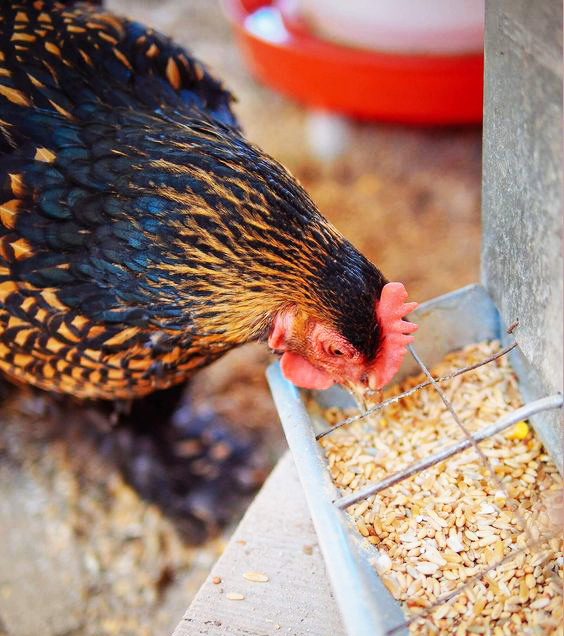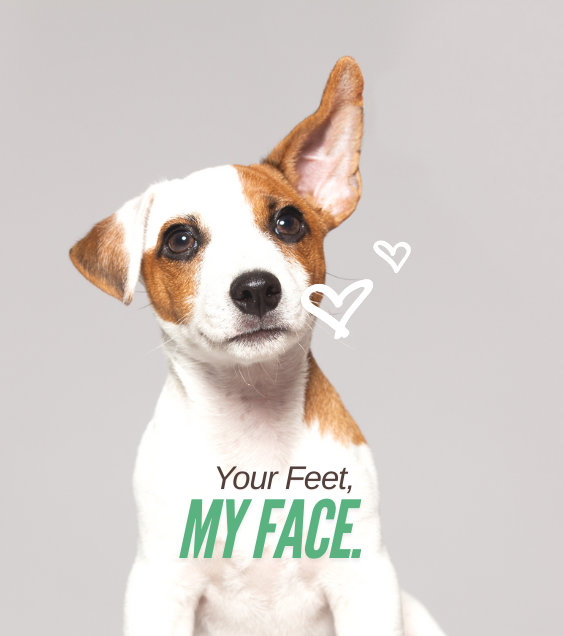Dog Harnesses with Handles for Better Control and Support

As a pet owner, one of your main priorities is ensuring the safety and comfort of your furry friend. When it comes to walking, exercising, or even training your dog, a dog harness with a handle can be an incredibly useful tool. In this article, we'll explore the benefits of using a dog harness with a handle and why it's a valuable investment for every pet owner.
Dog harness with a handle provides pet owners with better control over their dogs during walks or training sessions. The handle allows you to quickly and easily restrain your dog if necessary, preventing them from lunging at other animals or people. This increased control helps ensure your dog's safety and the safety of others around you. Traditional collars can put excessive pressure on your dog's neck and trachea, which can cause discomfort, choking, and even injury. A dog harness with a handle distributes the force evenly across your dog's chest and back, reducing the strain on their neck and trachea. This makes it a more comfortable and safer option for your furry friend.
If your dog has mobility issues or is recovering from an injury, a dog harness with a handle can provide them with additional support. The handle allows you to assist your dog in getting up from a lying position, climbing stairs, or navigating uneven terrain. This extra support can make a world of difference for senior dogs or dogs with physical limitations. As well as, dog harness with a handle can serve as an effective training tool for teaching your dog various commands and improving their behavior. The handle allows you to guide your dog during training sessions, helping them understand the desired action or response. By providing gentle and consistent guidance, you can achieve better training results and foster a stronger bond with your dog.
Dog harnesses with handles come in various designs and materials, ensuring a comfortable fit for your dog. The adjustable straps allow you to achieve a snug and secure fit, preventing the harness from rubbing or chafing. Additionally, the handle provides pet owners with a comfortable and ergonomic grip, making it easier to control and manage your dog during walks or training sessions.
Discover the Perfect Fit - Types of Dog Harnesses with Handles
When it comes to choosing a dog harness with a handle, pet owners have a plethora of options to choose from. With various styles and designs available, it's essential to select a harness that suits your dog's needs and preferences. Let’s explore the different types of dog harnesses with handles, including step-in, vest-style, and dual-clip harnesses, to help you make an informed decision for your dog.
Step-In Harnesses with Handles
Step-in harnesses are designed for easy use and minimal fuss. To put it on your dog, simply lay the harness flat on the ground, have your dog step into the leg holes, and then pull the harness up and buckle it over their back. The handle is usually positioned on the top of the harness, allowing you to maintain control and easily guide your dog during walks or training sessions. This type of harness is particularly suitable for dogs that may be skittish or resistant to having a harness put over their head.
Check-out Special Discounts on Step in Dog Harnesses for Small Dogs
Or, Check-out Special Discounts on Step in Dog Harnesses for Medium Dogs
Vest-Style Harnesses with Handles
Vest-style harnesses offer a comfortable and secure fit for your dog. These harnesses typically feature a padded, vest-like design that wraps around your dog's torso, distributing pressure evenly across their chest and back. The handle is usually located on the top of the vest, providing you with an easy way to control and support your dog when necessary. Vest-style harnesses are ideal for dogs that require additional support, such as those with mobility issues or who are prone to pulling on the leash.
Limited Time Promotion on Vest Style Harness - Large Dog
Dual-Clip Harnesses with Handles
Dual-clip harnesses provide pet owners with versatility and adaptability. These harnesses feature two leash attachment points – one on the back and one on the chest – allowing you to choose the best configuration for your dog's needs. The handle is typically located on the top of the harness, offering added control and support when needed. Dual-clip harnesses are excellent for training purposes, as the front clip can help discourage pulling, while the back clip can be used for dogs that are already well-behaved on walks.
View Coupons & Promo Code Deals for Dual Clip Harnesses
No-Pull Harnesses with Handles
No-pull harnesses are designed specifically to discourage dogs from pulling on the leash. These harnesses usually feature a front leash attachment point that gently steers your dog to the side when they attempt to pull, redirecting their attention back to you. A handle is often included on the top of the harness, providing pet owners with additional control and the ability to offer guidance during walks or training sessions. No-pull harnesses can be an effective training tool for dogs that need help improving their leash manners.
Exciting Discount Deals On No-Pull Harnesses
Comparing the Durability and Material Choices in Harness Construction: Nylon, Polyester, and Leather
Harnesses are essential for a variety of activities, such as rock climbing, mountaineering, dog walking, and horse riding. The materials used in harness construction play a crucial role in their durability, comfort, and overall performance. Now, we will compare three popular materials used in harness construction: nylon, polyester, and leather. We will discuss their pros and cons, and help you make an informed decision when choosing the right harness for your needs.
Nylon Harnesses: The Lightweight and Affordable Choice
Pros:
Lightweight: Nylon is a synthetic material known for its lightweight properties. A nylon harness is typically lighter than other materials, making it an ideal choice for prolonged use and reducing fatigue.
Affordable: Nylon is a cost-effective material, making nylon harnesses generally more affordable than their leather or polyester counterparts.
Water-resistant: Nylon has water-resistant properties, which means that a nylon harness will not absorb water, making it suitable for use in damp or wet environments.
Cons:
Durability: Nylon harnesses tend to wear out faster compared to polyester and leather harnesses. Frequent use, friction, and exposure to sunlight can cause the material to break down over time.
Not as eco-friendly: Nylon is a non-biodegradable material, which makes it less eco-friendly compared to natural materials like leather.
Polyester Harnesses: The Resilient and Low-Stretch Option
Pros:
Durability: Polyester is a synthetic material known for its durability. It is more resistant to abrasion and wear than nylon, making it a good choice for those who frequently use their harnesses.
Low-stretch: Polyester has low-stretch properties, which means it will maintain its shape and size even after extensive use. This can be advantageous for activities that require precise fit and support.
UV resistance: Polyester is more resistant to UV radiation than nylon, which means it will last longer when exposed to sunlight.
Cons:
Heavier than nylon: Polyester harnesses are generally heavier than nylon harnesses, which may be less comfortable for prolonged use.
Less water-resistant: While polyester is somewhat water-resistant, it does not perform as well as nylon when exposed to moisture.
Leather Harnesses: The Classic and Comfortable Choice
Pros:
Durability: Leather is a natural material known for its durability and long-lasting properties. A well-maintained leather harness can last for many years, making it a good investment.
Comfort: Leather harnesses tend to be more comfortable than synthetic materials, as they conform to the wearer's body over time, providing a custom fit.
Aesthetic appeal: Leather has a classic and timeless appeal, making it a popular choice for those who prefer a more traditional look.
Cons:
Expensive: Leather harnesses are generally more expensive than nylon or polyester harnesses due to the cost of the material and the craftsmanship involved.
Heavy: Leather harnesses are heavier than their synthetic counterparts, which may be a consideration for those who require a lightweight harness for extended use.
Requires maintenance: Leather harnesses require regular care and maintenance, including cleaning and conditioning, to maintain their durability and appearance.
When choosing a harness, it is essential to consider the material and its durability. Nylon, polyester, and leather all have their unique advantages and drawbacks. Nylon is lightweight and affordable but may wear out faster, while polyester offers durability and low-stretch properties but is heavier than nylon. Leather provides comfort and a classic aesthetic but requires more maintenance and is generally more expensive. Ultimately, the right material for your harness will depend on your specific needs, preferences, and budget.
How to Measure Your Dog for the Perfect Harness Size and Ensure a Secure, Comfortable Fit
A properly fitting harness is essential for your dog's safety, comfort, and overall well-being. An ill-fitting harness can cause discomfort, restricted movement, and even injury. In this paragraph, we will provide guidance on how to measure your dog for the correct harness size and share tips for ensuring a secure and comfortable fit.
Measuring Your Dog for a Harness
To find the right harness size for your dog, you'll need to take two key measurements: the girth and the neck circumference.
Girth Measurement: The girth, or chest measurement, is the most important measurement when selecting a harness. To measure your dog's girth, use a flexible measuring tape and wrap it around the widest part of your dog's chest, just behind the front legs. Ensure the tape is snug, but not too tight. Record the measurement in inches or centimeters.
Neck Measurement: While some harnesses do not require a neck measurement, it is still a useful measurement to have on hand. To measure your dog's neck circumference, wrap the measuring tape around the widest part of the neck, where the collar usually sits. Make sure the tape is not too tight, allowing for two fingers to fit comfortably between the tape and your dog's neck. Record the measurement in inches or centimeters.
Choosing the Right Harness Size
Once you have your dog's girth and neck measurements, refer to the sizing chart provided by the harness manufacturer. Each brand may have slightly different sizing guidelines, so always use the specific chart for the harness you're considering. If your dog falls between two sizes, it's generally recommended to choose the larger size and adjust the straps for a snug fit.
Tips for Ensuring a Secure, Comfortable Fit
Adjust The Straps: After selecting the correct harness size, adjust the straps to fit your dog's body snugly. Make sure the harness is not too tight, as this can cause discomfort and restrict movement. A good rule of thumb is to allow for two fingers to fit comfortably between the harness and your dog's body.
Check For Proper Placement: The chest strap should sit horizontally across your dog's chest, while the back strap should sit just behind the front legs. The harness should not impede your dog's shoulder movement or cause any chafing.
Test The Fit: Once the harness is properly adjusted, take your dog for a walk to ensure they're comfortable and secure. Observe your dog's movement and behavior to identify any issues, such as chafing, restricted movement, or the harness slipping out of place. If needed, make additional adjustments to ensure a perfect fit.
Regularly Recheck The Fit: As your dog grows, gains or loses weight, or as the harness material stretches over time, it's essential to regularly recheck the fit to maintain your dog's comfort and safety.
Handle Design and Functionality: Advantages of Different Handle Designs and Their Practical Applications
The handle is a key component of many products, such as leashes, tools, and bags. A well-designed handle can greatly enhance the user's experience, providing comfort, control, and functionality. Let’s discover the advantages of different handle designs, such as padded handles and handles with grips, and discuss their practical applications.
Padded Handles: Comfort and Cushioning
Pros:
Enhanced Comfort: Padded handles feature a soft cushioning material, such as foam or gel, which can significantly improve user comfort, especially during extended use or when handling heavier loads.
Reduced Hand Fatigue: The cushioning effect of padded handles can help reduce hand fatigue, allowing users to maintain a secure grip for longer periods without discomfort.
Shock Absorption: Padded handles can absorb some of the impact and vibration associated with certain activities, such as using a hammer or walking a dog that tends to pull on the leash.
Practical Applications: Padded handles are ideal for activities that require prolonged or repetitive use, as well as situations where shock absorption is beneficial. Examples include dog leashes, workout equipment, hand tools, and luggage.
Handles with Grips: Improved Control and Slip Resistance
Pros:
Enhanced Control: Handles with grips, such as rubber or textured materials, provide users with better control and precision in handling various objects or tools.
Slip Resistance: Grips can help prevent the user's hand from slipping, especially in wet or sweaty conditions, ensuring a secure and safe hold on the object.
Durability: High-quality grip materials can be more resistant to wear and tear compared to non-grip handles, prolonging the lifespan of the product.
Practical Applications: Handles with grips are well-suited for situations where precise control, slip resistance, and durability are crucial. Examples include kitchen utensils, gardening tools, sports equipment, and outdoor gear.
Ergonomic Handles: Designed for Optimal Comfort and Efficiency
Pros:
Reduced Strain: Ergonomic handles are designed to fit the natural contours of the user's hand, reducing strain on the fingers, hand, and wrist.
Improved Efficiency: An ergonomic handle allows for more efficient use of force, enabling users to perform tasks with greater ease and less effort.
Enhanced Stability: Ergonomically designed handles provide improved stability, allowing users to maintain a secure grip and reducing the likelihood of accidents.
Practical Applications: Ergonomic handles are beneficial for activities that involve repetitive motions or require precision and control. Examples include computer mice, office supplies, kitchen knives, and power tools.
Attachment Points and Leash Options: The Importance of Multiple Attachment Points and the Benefits of Front-Clip vs. Back-Clip Harnesses
When it comes to choosing a harness for your dog, one important factor to consider is the attachment point for the leash. Multiple attachment points can offer increased control and versatility, while the choice between front-clip and back-clip harnesses can significantly impact your dog's walking behavior. Now, we will discuss the importance of multiple attachment points and the benefits of front-clip versus back-clip harnesses.
The Importance of Multiple Attachment Points
Improved control: Harnesses with multiple attachment points offer dog owners greater control over their pet's movements. By attaching the leash to different points on the harness, owners can better manage their dog's behavior and encourage proper walking etiquette.
Customizable walking experience: Multiple attachment points allow owners to customize the walking experience based on their dog's size, temperament, and training needs. For example, a front-clip attachment may work better for a dog that tends to pull, while a back-clip attachment might be more suitable for a well-behaved walker.
Versatility: Harnesses with multiple attachment points can be easily adapted for various situations, such as attaching a long line for off-leash training or a short leash for more controlled walks in crowded areas.
Front-Clip Harnesses: Benefits and Applications
Discourages pulling: Front-clip harnesses attach to the leash at the dog's chest, which helps to discourage pulling behavior. When a dog attempts to pull, the front-clip design redirects their momentum, turning them back towards the owner, and making it difficult to continue pulling.
Increased control: A front-clip harness provides dog owners with more control over their pet's movements, making it easier to guide them in the desired direction.
Training aid: Front-clip harnesses can be an effective training aid for dogs that are learning to walk on a leash, as they help to promote proper walking behavior and discourage undesirable habits, such as pulling or lunging.
Back-Clip Harnesses: Benefits and Applications
Comfortable and easy to use: Back-clip harnesses attach to the leash at the dog's back, which is typically more comfortable for the dog and easier for the owner to put on and take off.
Reduced risk of injury: Unlike traditional collars, back-clip harnesses distribute pressure across the dog's chest and back, reducing the risk of injury to the neck and trachea.
Suitable for well-behaved walkers: Back-clip harnesses are a good option for dogs that already walk well on a leash and do not have issues with pulling or lunging.
Support for Dogs with Special Needs: How Dog Harnesses with Handles Assist Dogs with Mobility Issues, Senior Dogs, and Dogs Recovering from Surgery or Injuries
For dogs with special needs, such as mobility issues, aging, or recovery from surgery or injuries, a standard harness might not provide the necessary support and assistance. Dog harnesses with handles are designed to offer additional support, making it easier for pet owners to help their furry companions navigate various situations. In this ending paragraph, we will describe how dog harnesses with handles can assist dogs with mobility issues, senior dogs, and dogs recovering from surgery or injuries.
Mobility Issues
Dogs with mobility issues, such as hip dysplasia, arthritis, or degenerative conditions, may struggle with everyday activities like walking, climbing stairs, or getting in and out of cars. Harnesses with handles can provide the following benefits:
Improved support: A handle on the harness allows pet owners to provide additional support, helping to alleviate pressure on the dog's joints and muscles, making it easier for them to move.
Enhanced stability: The handle can help pet owners guide their dog's movements, offering stability and balance during challenging situations like navigating slippery surfaces or uneven terrain.
Increased safety: By providing additional support and control, harnesses with handles can help prevent accidents and injuries that may occur due to a dog's limited mobility.
Senior Dogs
As dogs age, they may experience a decline in strength, balance, and flexibility. Harnesses with handles can provide the following benefits for senior dogs.
Assistance with daily activities: Senior dogs may have difficulty with tasks like climbing stairs or jumping into cars. A harness with a handle allows pet owners to gently assist their dog, making these activities less challenging and more comfortable.
Reduced strain on joints: By providing additional support, harnesses with handles can help reduce the strain on an older dog's joints, which may alleviate discomfort and promote better overall mobility.
Increased confidence: With the added support from a harness with a handle, senior dogs may feel more confident and secure in their movements, leading to a better quality of life.
Recovery from Surgery or Injuries
Dogs recovering from surgery or injuries may have temporary or long-term mobility limitations. Harnesses with handles can provide the following benefits during the recovery process:
Support during rehabilitation: A harness with a handle can provide additional support during physical therapy sessions, helping to facilitate a dog's healing and recovery.
Protection of the affected area: By offering additional support and control, a harness with a handle can help prevent further strain or injury to the affected area during the recovery process.
Assistance with daily activities: As a dog recovers from surgery or injury, they may require assistance with daily activities such as going to the bathroom, navigating stairs, or getting in and out of vehicles. A harness with a handle allows pet owners to provide gentle support and guidance, making these tasks more manageable for their dog.
Conclusion
In conclusion, dog harnesses with handles offer numerous benefits for dogs with special needs, senior dogs, and those recovering from surgery or injuries. These harnesses provide additional support, stability, and safety, making daily activities more manageable and comfortable for both the dog and their owner. Moreover, harnesses with handles can improve the walking experience for dogs that require extra control or assistance.
Throughout this article, we have discussed various aspects of dog harnesses, such as the importance of material and durability, size and fit, handle design and functionality, attachment points and leash options, and popular brands and models. We have also highlighted how harnesses with handles can be particularly beneficial for dogs with mobility issues or other special needs.
By considering these key points and assessing your dog's specific requirements, you can make an informed decision when choosing the right harness for your canine companion. A dog harness with a handle can be an invaluable investment, providing additional support and enhancing the quality of life for both you and your furry friend.
Related Post
Subscribe to our weekly newsletter!
Get coupons from your favorite retailers sent to your inbox at the beginning of every week.
You can cancel anytime.






Comment
leave comment